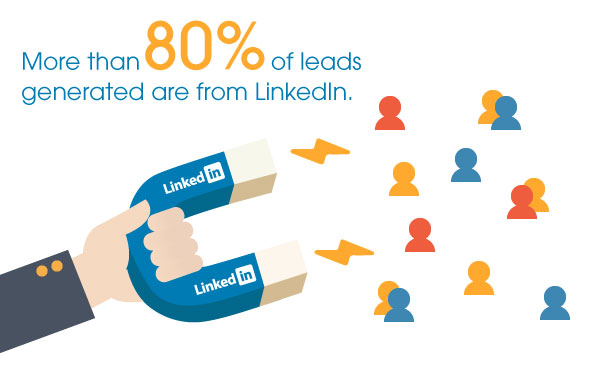10 minute read
LinkedIn is, by the very nature of its design, a perfect social platform for fueling B2B lead generation efforts. Just not in the same manner you would traditionally do on platforms such as Google Ads or Instagram.
With LinkedIn, you are better off running paid campaigns for people to download an eBook, register for a webinar, offer a free product sample, or promote an event. It isn’t about the hard sell on LinkedIn, it is about building relationships, educating and helping others succeed. Only when they start succeeding, will you on this platform.
Stay away from free trials and booking demos, it is too complicated for LinkedIn users and don’t produce results.
LinkedIn is very effective for capturing the users information, where you can then import into Facebook and Google Ads to create lookalike logic that will generate more quality leads.
But how can you ensure that your company stands out from your competitors who are also using LinkedIn? That is the tricky part. This expert guide will help you use this B2B social networking powerhouse to its fullest potential.
Facts, Stats & Best Uses Of LinkedIn:
- More than 80% of leads generated through social media for B2B marketers come from LinkedIn.
- The average click costs about $69.
- LinkedIn is best used for recruiting white collars, education and for obtaining clients with a $15,000+ lifetime value.
- Also, great for updating customer subscriptions and product updates.
- Text ads cost on average $3 per click and are great for branding.
- Sponsor ads average $6 per click and are great for gated content offers.
- Keep your titles at 128 characters, not the maximum allowed of 150 due to viewing issues.
- InMail ads are expensive, but good for retargeting and better sent from a personal account rather than a business profile.
- 78% of B2B marketers say LinkedIn is an effective tool for content marketing.
- LinkedIn’s lead generation forms are great for generating B2B leads, but do a poor job tracking, retargeting, and quality control.
- Video ads play muted and you have the ability to hardcode captions, but there is no retargeting option.
- LinkedIn is 277% more effective at lead generation than Facebook and Twitter.
Complete Your LinkedIn Company Page
A LinkedIn company page that includes basic information about the company and employee names is going to fall flat in the lead generation department. Anyone who is keen to get the address of your headquarters or find out how many employees you have can find out via an online search.
Instead, turn your company page into a lean, mean lead generating machine. Use it as another way to get prospects to visit your website. There are several ways to accomplish this.
Think of the company description section as an elevator pitch for your brand. Use it to “sell” your product or service by describing its benefits rather than its features, and how it benefits users. For example, if your product was a beach in a tropical destination, it might say the following:
Designed with relaxation and sunbathing in mind, the beach offers sugar white sand for luxurious lounging and refreshing dips in a crystal clear turquoise ocean.
The Recent Updates section is another often overlooked lead generation gold mine. Post information most likely to generate click throughs. In other words, updates should be directly aimed at your target audience. Make sure you keep your feed active so that people have a reason to read the content on it.
Images are powerful marketing tools for several reasons. First, they can be processed in just a few seconds, so they are perfect to capture increasingly shrinking attention spans. Second, they can be designed with colors and graphics that make them prominent.
In the case of LinkedIn, header images offer a prime opportunity to engage page visitors. They are the visual version of hooks in copy. If designed well, header images keep visitors on your page long until the company description drives them to your website.
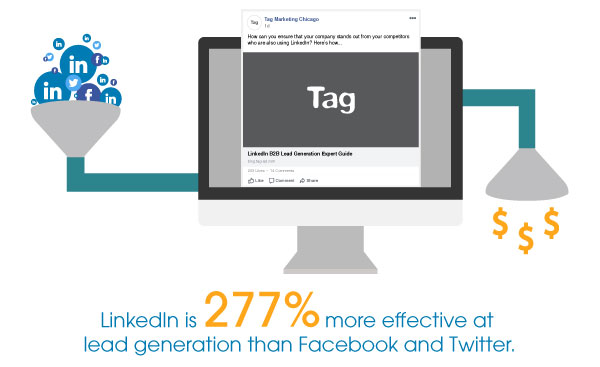
Scouting Prospects On LinkedIn
Before you start reaching out to LinkedIn users, it is important to make sure you are focusing your efforts on the correct users – that is, your specific buyer personas. Fortunately, LinkedIn offers some nifty resources for targeted search queries.
You can refine the LinkedIn database into your ideal lead target list using the Sales Navigator tool. It offers 22 different filter categories including keywords, industry, geography, postal code, company, company headcount, job title, years at company, years in position, years of experience, job title and job function.
One solid rule to follow is to only add users who are at least a second or third-degree connection. Start with second-degree connections. You do not want to develop an online reputation as a spammer. If you do, your efforts may be discredited even when your product or service is the perfect solution to a user’s problem.
Plus, having something in common makes a significant difference when it comes to any type of selling. According to a study cited by LinkedIn, 87% of B2B buyers have a favorable impression of someone introduced through their professional network.
Send the Right Message
Once you have defined your target audiences, it is time to connect with them. The more connections you make on LinkedIn, the better. It will give you more qualified second and third-degree connections to request as first-degree connections.
LinkedIn revamped its Messaging system to make it a real-time experience. Exchanging messages now feels like texting, which is helpful for avoiding a formal, pushy tone when communicating with prospects. You can even see when the other party is typing a response. In a way, it is almost like speaking with someone in person.
Make sure to add a short personal message along with the invitation. Keeping the invitation message personal – not sales oriented – is imperative!
This non-salesy approach to sales is part of an overall marketing trend toward a conversational, personalized tone and away from the slick, pushy approach of the past. The worst move you could possibly make when trying to engage a lead via LinkedIn messaging is to include an ask in your invitation to connect. Instead, it is recommended that you connect with them (assuming they accept your invitation) and then quietly observe their behavior patterns on the social network before making any sort of ask.
LinkedIn Messenger Template With The 9 Essential Elements
- Subject line that makes it clear immediately why the sender is reaching out; it should be relevant to the recipient’s industry, company, job title or activity on LinkedIn
- Recipient’s first name
- Legitimate commonality. For example, both belong to the same LinkedIn group
- Observation the sender made about the recipient’s industry, company, job title or activity on LinkedIn
- Resource offer. Examples of good offers include a whitepaper, research report and webinar
- A question related to the recipient’s role at their organization and one of the pain points it typically involves
- The ask. Making a request to schedule a phone call to discuss the aforementioned pain point
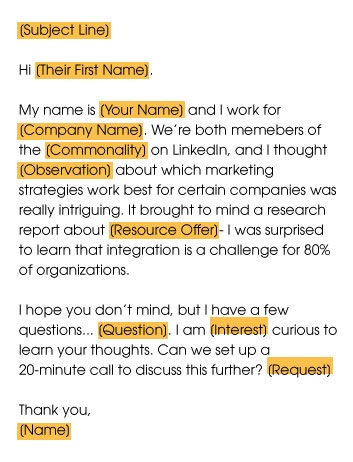
Following certain tactics when you are on the receiving end of LinkedIn messages is equally important. Making a good first impression is vital in this case. Sending each one of your new connections a customized welcome message goes a long way to endear them to you.
When you receive an alert that someone has accepted your connection request, you should start a dialogue with them that positions yourself as someone who can offer your new connection value. Doing so will demonstrate your value to them and give you insight on whether or not they are a potential prospect.
If the connection does not respond after one week, send them a follow-up message. Make sure you include personalization so it is apparent to them that you are addressing them individually versus copying and posting a generic spam email to all of your connections. The point of this message is to continue demonstrating value and your understanding of their pain points. You may also want to include a lead magnet – something of value they receive in exchange for providing you with their contact information. Do not try to pitch your product or services in this message. It is still too early.
The final email you should send for awhile is best reserved for one to two weeks after the initial follow-up message. The goal is to build on the relationship you have established online and move the conversation offline. This message should be concise and include their industry, company name, pain point and a request to schedule a quick phone call. Adding “quick” is important in order to make it clear to them the call will not take up much of their time.
Using LinkedIn messages as a marketing tactic requires a fair amount of patience. After all, you are building a relationship, albeit via an online platform, and relationships take time to build. Do not despair if the number of leads it generates is small at first. You will build momentum with it.
Automate to Generate
Establishing and building business relationships can be time-consuming. You may think you do not have enough hours in the day to execute it effectively. However, there are certain functions on LinkedIn you can automate while still generating qualified leads.
You can set up a virtual assistant to send connection requests and answer basic questions on your behalf. This saves the time you may otherwise waste communicating with cold leads. Additionally, you can use automation to publish content and share updates with your network. Your virtual assistant can schedule the posts in tools such as Hootsuite to ensure you post content on a daily basis.
With that said, it is important for you to respond personally to messages that need a detailed response. When it comes to messaging, you always want your connections to feel like you are on the other end of the conversation.
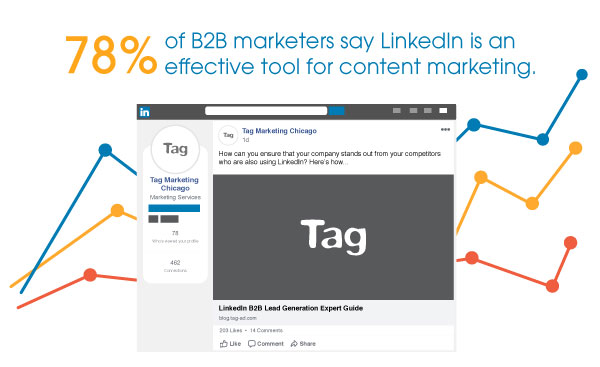
Keep the Content Coming
In order to position your brand as a true thought leader, you need to post a steady stream of content and LinkedIn Pulse articles. And this is critical: It must be high-quality content. Remember, the quality and value of the pieces you post and share reflect on your company. They should be unique, thought-provoking and demonstrate your brand’s expertise.
Make sure your blogs, research papers, eBooks, Pulse articles and other types of content offer something that others in your industry do not. This will help them capture the attention of your audiences and set you apart from the pack. And make them interesting! The more people find them interesting, the more shares they will get.
Do not worry about posting the same pieces on LinkedIn that you already posted on your website. You will not be cited a duplicate content penalty on search. Be aware, however, that LinkedIn Pulse articles can cannibalize your website’s content. This means they can rank higher on search results. Addressing this issue is simple. Make blog posts top priority when developing content and publish the occasional stellar LinkedIn article.
LinkedIn offers a way to drive traffic to your website that you would not otherwise have with the shared posts feature. This allows you to share the blog posts on your website via your LinkedIn page. Since the blog posts are housed on your website, the shared posts lead readers there.
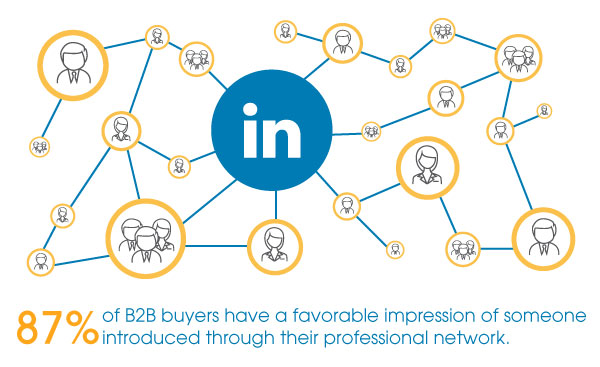
Go Beyond Networking
LinkedIn is another social channel that deserves a mention of its ads. After all, it was created to aid professional networking, which is an integral part of B2B marketing. LinkedIn offers a number of different types of ads, with the following among the most popular:

LinkedIn Text Ads
Similar to Google search ads and easy to set up and manage, text ads are great for brand awareness because they have a lower CPM than other ad formats. One drawback is, they only run on desktop.
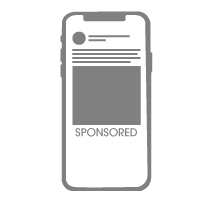
LinkedIn Sponsored Content
Using sponsored content, you can promote a piece of content on your LinkedIn company page. These ads pack a lot of punch because they are compatible with larger images and more text, and they are placed in users’ news feeds.
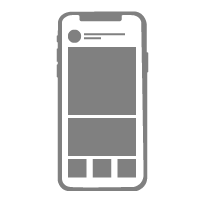
LinkedIn Dynamic Ads
Like text ads, dynamic ads only appear on desktop. However, their dynamically generated ad format is very engaging because it uses information from member’s profiles. They are ideal for attracting users to your LinkedIn page, advertising job openings and offering content downloads.
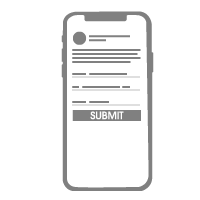
LinkedIn Lead Generation Forms
Pre-filled forms populated with the user’s LinkedIn profile information allow you to collect quality leads. You can create up to three custom fields in addition to the existing fields. At the moment, lead generation forms are only available on mobile.
LinkedIn B2B Lead Generation Done Right
With such a powerful marketing tool at your disposal, you want to make sure it is used to its full advantage. At Tag Marketing, we have successfully managed our clients’ LinkedIn profiles and company pages for years.
We possess the expertise and experience to know exactly what kind of content to post and how to approach potential connections and existing connections to build relationships that turn into qualified leads. In our hands LinkedIn becomes a B2B lead generating machine – all with minimal time and effort on your part.
Are you ready to leverage LinkedIn effectively for your B2B business? Contact us today!
You can brush up further on lead generation by reading our guide to the 30 Greatest Lead Generation Tips. It is a great resource to keep handy whenever you need a quick refresher on the best practices to follow to get the results you want.
